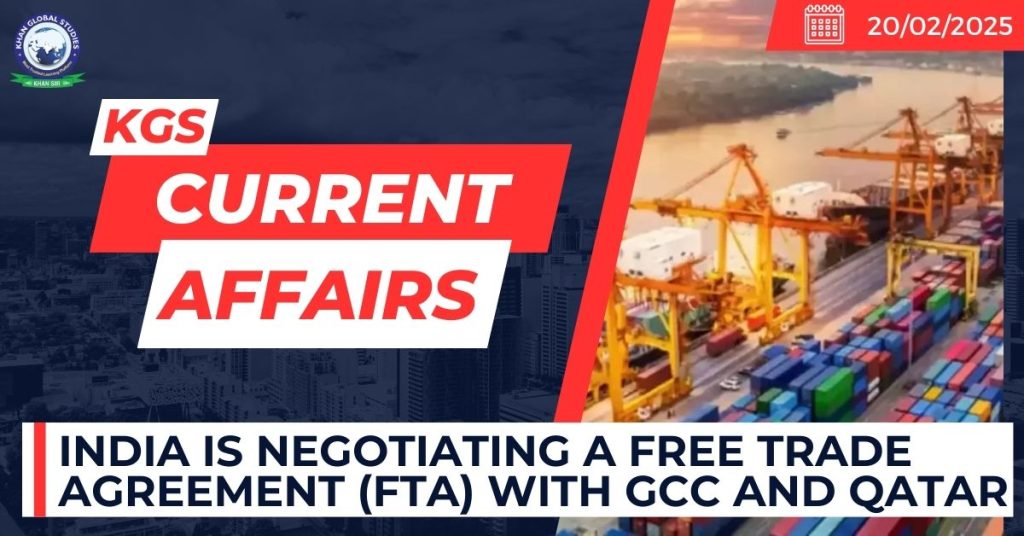Context:
India is negotiating a Free Trade Agreement (FTA) with the Gulf Cooperation Council (GCC) and Qatar, to boost cooperation in trade, energy, investment, and security.

More on the News
- The Ministry of External Affairs (MEA) announced the development during a special briefing on the state visit of the Amir of Qatar to India in February 2025.
India-Qatar Economic relations:
- In 2023-24, the country’s imports from Qatar stood at USD 12.34 billion, while its exports were only USD 1.7 billion.
- Qatar is the largest supplier of LNG and LPG. Besides, India also imports ethylene, propylene, ammonia, urea and polyethene from Qatar.
- India already has an FTA with the UAE. It is also in the advanced stage to conclude talks for a similar pact with Oman.
- During the recent meeting, two sides agreed to explore the possibility of entering into a bilateral comprehensive economic partnership agreement (CEPA) with an aim to double bilateral trade to USD 28 billion by 2030.
Free Trade Agreement (FTA) and Other Trade agreements:

FTA is an agreement between the country(s) or regional blocks to reduce or eliminate trade barriers, through mutual negotiations with a view to enhancing trade.
- The WTO uses the nomenclature of Regional Trade Agreements (RTAs) to describe FTAs.
Preferential Trade Agreement (PTA): This is the term used in the WTO for trade preferences, such as lower or zero tariffs, which a member may offer to a trade partner unilaterally.
- In a PTA there is a positive list of products on which duty is to be reduced while in an FTA there is a negative list on which duty is not reduced or eliminated.
Comprehensive Economic Cooperation Agreement (CECA)/Comprehensive Economic Partnership Agreement (CEPA): These terms describe agreements that consist of an integrated package of goods/services and investment with other areas like IPR, competition etc.
- CECA/CEPA are more comprehensive and ambitious that an FTA in terms of coverage of areas and the type of commitments.
Custom Union: In this system partner countries may decide to trade at zero duty among themselves, however, they maintain common tariffs against the rest of the world.
Common Market: Integration provided by a Common market is one step deeper than that by a Customs Union. A common market is a Customs Union with provisions to facilitate free movements of labour and capital, harmonize technical standards across members etc. Example: European Common Market.
Economic Union: It is a Common Market extended through further harmonization of fiscal/monetary policies and shared executive, judicial & legislative institutions. Example: European Union.
Key Trade Agreements of India:
- India has preferential access, economic cooperation and Free Trade Agreements (FTA) with about 54 individual countries as of 2020.
- India has signed bilateral trade deals in the form of CEPA/CECA/FTA/PTAs with some 18 groups/countries (2020).
- India has signed particularly 14 FTAs and 6 PTA so far.
- Within Asia, India has signed bilateral FTAs with Sri Lanka (1998), Afghanistan (2003), Thailand (2004), Singapore (2005), Bhutan (2006), Nepal (2009), Korea (2009), Malaysia (2011) and Japan (2011).
- There have also been two regional trade agreements, the South Asian Free Trade Agreement (SAFTA, 2004) and the India-Association of Southeast Asian Nations Agreement (ASEAN, 2010).
- Outside Asia, FTAs have been agreed with Chile (2006) and MERCOSUR (2004).

